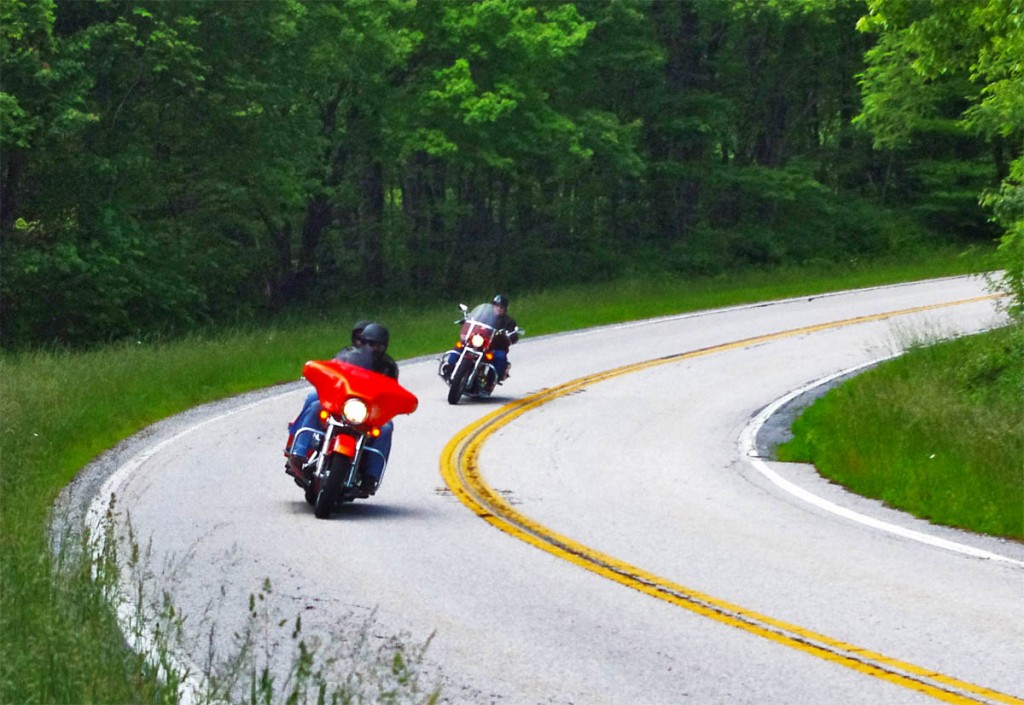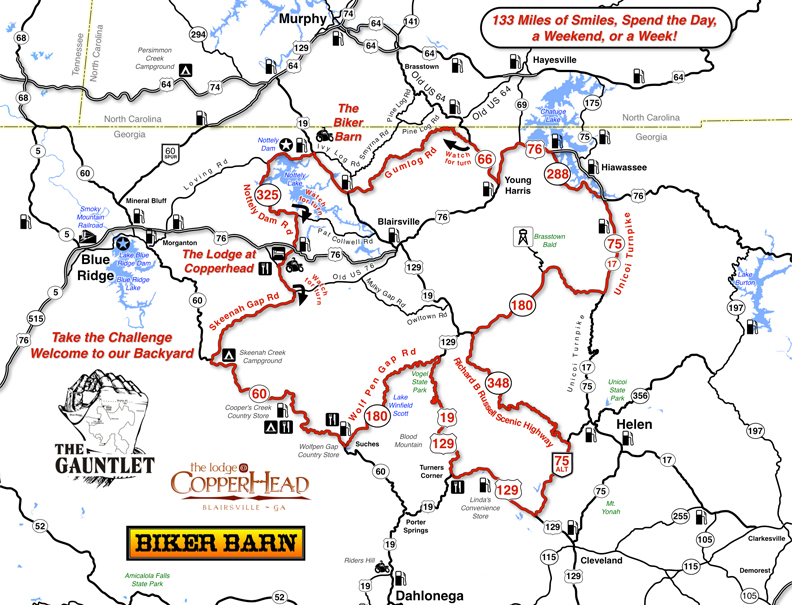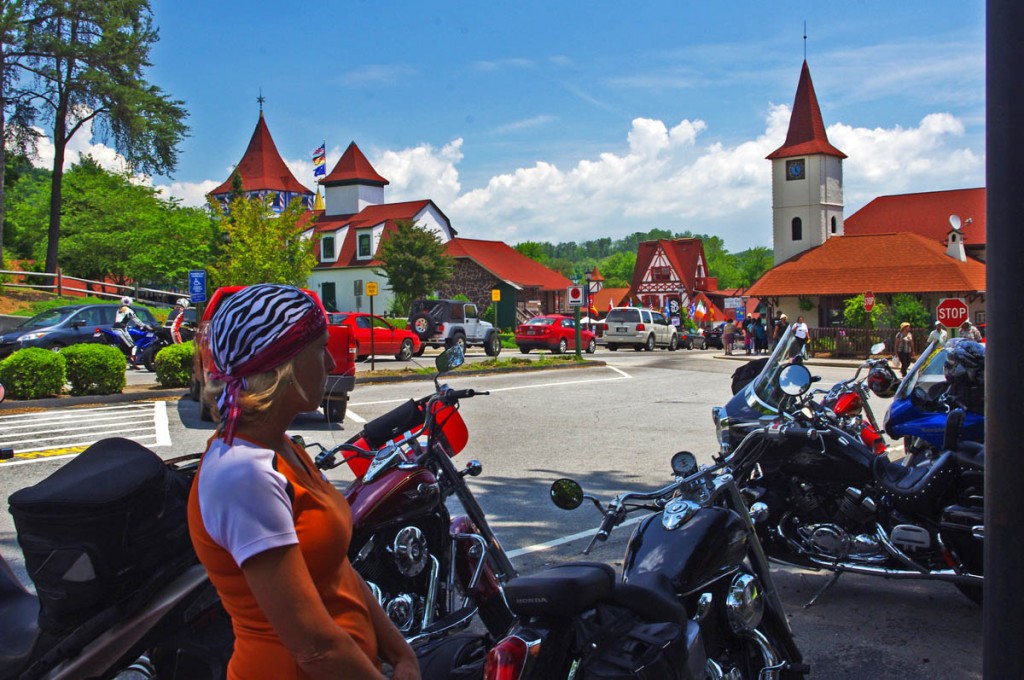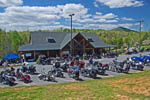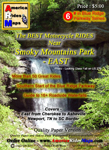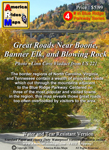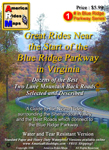 711.5 miles. New one day record for a mapping expedition. A good chunk of that was on the Interstate though, so it doesn’t really count. Still, that’s a pretty good haul for the shorter days of the fall season when I typically average less than 500 miles per day evaluating two lane mountain back roads to find the best ones for my maps.
711.5 miles. New one day record for a mapping expedition. A good chunk of that was on the Interstate though, so it doesn’t really count. Still, that’s a pretty good haul for the shorter days of the fall season when I typically average less than 500 miles per day evaluating two lane mountain back roads to find the best ones for my maps.
It had been raining since first light though never heavy enough to penetrate my gear and soak me through. Although the weather was fairly warm, my electric heated gear helped dry out any seepage. It was an effective tactic which helped keep me toasty warm even with a little dampness. Must give a plug to Gerbing  heated motorcycle gear and Fieldshear outwear. 16 hours in the rain and I remained warm, dry, and comfortable.
heated motorcycle gear and Fieldshear outwear. 16 hours in the rain and I remained warm, dry, and comfortable.
As darkness came over me and the last of the two lane roads I wanted to explore passed beneath my wheels, I couldn’t justify another night in a motel at peak season prices. Within reach of Roanoke , I-81 was calling me. The daylight was spent making a huge arc from Staunton, east to the Blue Ridge Parkway, south to the outskirts of Lynchburg, and then west across the West Virginia state line on what were mostly disappointing roads. The least likely prospects are left to wrap up the end of a trip, though some jewels were discovered. 
Rolling out onto the dark highway the torrents came in waves and any thought of wet clothing was overshadowed by simply trying to see through the squalls kicked up by semi trucks and a smokey visor better suited to bright sunlight than night cruising. At times the best course was to simply lock on the glowing red pair of taillights ahead and follow them wherever they went as the road disappeared in the glare of headlights reflecting on the rain-fogged helmet shield, playing havoc with any detail of lane lines or signage. The worst of it was crossing the mile high mountain pass from Tennessee into North Carolina when the winds kicked up and the midnight darkness was illuminated only once by the flashing blue lights of a string of troopers gathered to  work an accident. Without a car to follow I could have easily driven up one of those runaway truck ramps in the blackness of the storm.
work an accident. Without a car to follow I could have easily driven up one of those runaway truck ramps in the blackness of the storm.
So what did I discover? Fewer great roads than expected. It had been a while since I last came this far north on the Blue Ridge Parkway, all the way to it’s end. I did hit it at pretty much the peak of color, and the days prior had been clear and sunny so I could fully enjoy the fall splendor. The trees were putting on a great show, but I am a harsh judge, spoiled by living near the best section of the 469 mile national roadway.
There are a wealth of rocky outcroppings and the occasional long range view. To the east, you are often treated to views looking out over the vast expanse of the Piedmont stretching to the horizon. To the west, you overlook the southern end of the Shenandoah Valley.  The mountains here are distinctly separated by broad valleys which make them stand out in contrast to the flatter portions between them. Elevations are lower than near my home base, and the foliage reflects that. More oak and scrub which tends to turn yellow-orange-gold then quickly brown. Occasional bursts of red, but lacking the evergreens, birch, dogwood, and beech, found at higher altitudes to give a full rainbow of hues. Much or the roadway is through forested patches and the overlooks are less dramatic – they frequently highlight streams which course close to the road instead of the more impressive scenery found south. It’s not that it’s not a worthy ride and full of enjoyment, just not as eye-catching as what I am used to seeing. There’s no place like home.
The mountains here are distinctly separated by broad valleys which make them stand out in contrast to the flatter portions between them. Elevations are lower than near my home base, and the foliage reflects that. More oak and scrub which tends to turn yellow-orange-gold then quickly brown. Occasional bursts of red, but lacking the evergreens, birch, dogwood, and beech, found at higher altitudes to give a full rainbow of hues. Much or the roadway is through forested patches and the overlooks are less dramatic – they frequently highlight streams which course close to the road instead of the more impressive scenery found south. It’s not that it’s not a worthy ride and full of enjoyment, just not as eye-catching as what I am used to seeing. There’s no place like home.
 The really dramatic views are found off the parkway, often to the west as the mountains rise again into West Virginia. The roads through the valleys do have an appeal. Rural, farms and dairy pastures, and lots of historic tiny towns, their relevance lost to time. For those with an historic bent, viewing them is rewarding. I appreciate old homes, and they are found in both pristine preservation and admirable depreciation. In general though, these valley roads offer nothing special, though I did find a few exceptions.
The really dramatic views are found off the parkway, often to the west as the mountains rise again into West Virginia. The roads through the valleys do have an appeal. Rural, farms and dairy pastures, and lots of historic tiny towns, their relevance lost to time. For those with an historic bent, viewing them is rewarding. I appreciate old homes, and they are found in both pristine preservation and admirable depreciation. In general though, these valley roads offer nothing special, though I did find a few exceptions.
Roads connecting to the Blue Ridge Parkway, typically a good location to find great rides, are disappointingly short due to the lower altitudes. Once the descent is made they either empty into towns or connect to unremarkable valley byways. Again, I noted the best of these.
The most interesting areas are found west where the mountains start to rise again. There are still valleys between them, but roads which cross the ridges can be fantastic. The closer you draw to the West Virginia state border, the more likely you’ll find enjoyable riding. It confirms my desire to expand my travels into West Virginia and explore the border area in more depth.
This trip provides the information to complete the last map in the Blue Ridge Parkway series which means I now offer full coverage of every great ride adjacent to the park from end to end,  locations of reliable gas stations, and suggestions to make a trip down that roadway a lot more interesting and enjoyable. It shouldn’t take long to put it together as much of the work was completed before I left. First, a day of rest. Expect the newest America Rides Map this week.
locations of reliable gas stations, and suggestions to make a trip down that roadway a lot more interesting and enjoyable. It shouldn’t take long to put it together as much of the work was completed before I left. First, a day of rest. Expect the newest America Rides Map this week.
